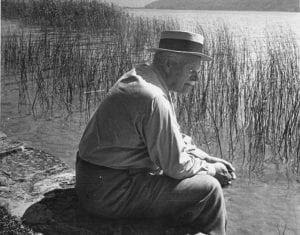Dear Professor [Pauli] 14 October 1935
Please accept my grateful thanks for your friendly cooperation.
As I have already stated. you can rest assured that your anonymity will be guaranteed in every respect.
I have selected only the dreams that contain symbols of the "Self: and these I have largely condensed.
The interpretation is not of a personal nature and refers solely to the configuration of ideas. to which moreover.
I have given historical parallels are simply facts, which can only be disputed insofar as it would be possible to challenge the historical authenticity of the evidence.
The personal associations of the dream are much closer to the dreamer than the purely abstract associations of ideas.
I shall take the liberty of sending you a copy, and I think you will find that wherever possible I have omitted any personal references
Thus. there is hardly likely to be anything in my essay with which you might disagree for the historical parallels are simply facts ,which can only be disputed insofar as it would be possible to challenge the historical authenticity of the evidence.
The personal associations of the dream are much closer to the dreamer than the purely abstract associations of ideas.
I shall take the liberty of sending you a copy, and I think you will find that wherever possible I have omitted any personal references.
In your case, the idea of the polar-force image is probably connected with your earliest dreams of the pole of Heaven.
The pole is the center of a rotating system, which actually represents the mandala.
The basic primeval idea behind this seems to be that people are classified in this field of force.
The “pole” is also represented, as seems to be the case with you, as an emanating nucleus.
I have just discovered such a medieval representation in London,
The nucleus is often depicted as a lapis, as a mediator, as a vinculum and ligamentum elementarum, the connection of the elements.
The idea seems to be linked to the medieval concept of the microcosm and macrocosm, according to which all men are contained in the macrocosm with every individual representing the whole as a microcosm.
The dipoles probably indicate first and foremost the complementary relationship in a self-regulating system.
Thus in psychological terms: conscious = unconscious, projected: man and woman, which, next to the family. represent the simplest case of participation.
The rotation of one pole is indisputably the beginning of individuation, hence the numerous rotation symbols in your dreams (historically designated as circulation spiritum, and in Chinese as the circulation of light).
It is probably basically a spiral rotation with a perpetual movement toward the nucleus.
The representation by isotopes and spectral lines is along the same lines.
They are fixed units or fixed groupings of units symbolizing the individual case (= individual + related individual or series of individuals).
Generally speaking, the unconscious is thought of as psychic matter in an individual.
However, the self-representation drawn up by the unconscious of its central structure does not accord with this view, for everything points to the fact that the central structure of the collective unconscious cannot be fixed locally but is an ubiquitous existence identical to itself; it must not be seen in spatial terms and consequently, when projected onto space, is to be found everywhere in that space.
I even have the feeling that this peculiarity applies to time as well as space.
The representation of the collective unconscious usually consists of the so-called quatemium-which is the medieval term-meaning the fourfold emanation or radiation that has been designated by a medieval philosopher as the exterior of the nucleus.
A biological analogy would be the functional structure of a termite colony, possessing only unconscious performing organs, whereas the center, to which all the functions of the parts are related, is invisible and not empirically demonstrable.
The radioactive nucleus is an excellent symbol for the source of energy of the collective unconscious, the ultimate external stratum of which appears as individual consciousness.
As a symbol, it indicates that consciousness does not grow out of any activity that is inherent to it; rather, it is constantly being produced by an energy that comes from the depths of the unconscious and has thus been depicted in the form of rays since time immemorial.
The center is thus represented by the Greek Gnostics as Spinther (the spark) or as Phos archetypon (the archetypal light) .
Alongside this representation of the psychic structure, there is another one, actually the reverse; namely, the soul as a shell enveloping the spherically shaped cosmos, in the innermost part of which lies the earth as the heaviest and most dead part.
In this case, the rays are directed onto the earth from outside through the medium of the stars.
So one could speak here in terms of an introverted and an extraverted attitude.
However, I believe that they are essentially one and the same thing, in that these opposites only come into being through the projection onto space of what is in itself a non-spatial (i.e., transcendental) existence.
In my essay, I have actually attempted to show these things to a certain extent but have deliberately refrained from going into the parallels with physics, since, for obvious reasons, I did not wish to draw attention to this particular aspect.
The center, or the nucleus, has always been for me a symbol of the totality of the psychic, as the conscious plus the unconscious, the center of which does not coincide with the ego as the center of consciousness, and consequently has always been perceived as being external.
That is also why it was always projected onto the conception of the Deity, the One, the Monad, and so on.
I hope you are enjoying America.
With best wishes, I remain,
Yours sincerely,
[C. G. JUNG] ~Carl Jung, Atom and Archetype, Pages 12-14


No comments:
Post a Comment